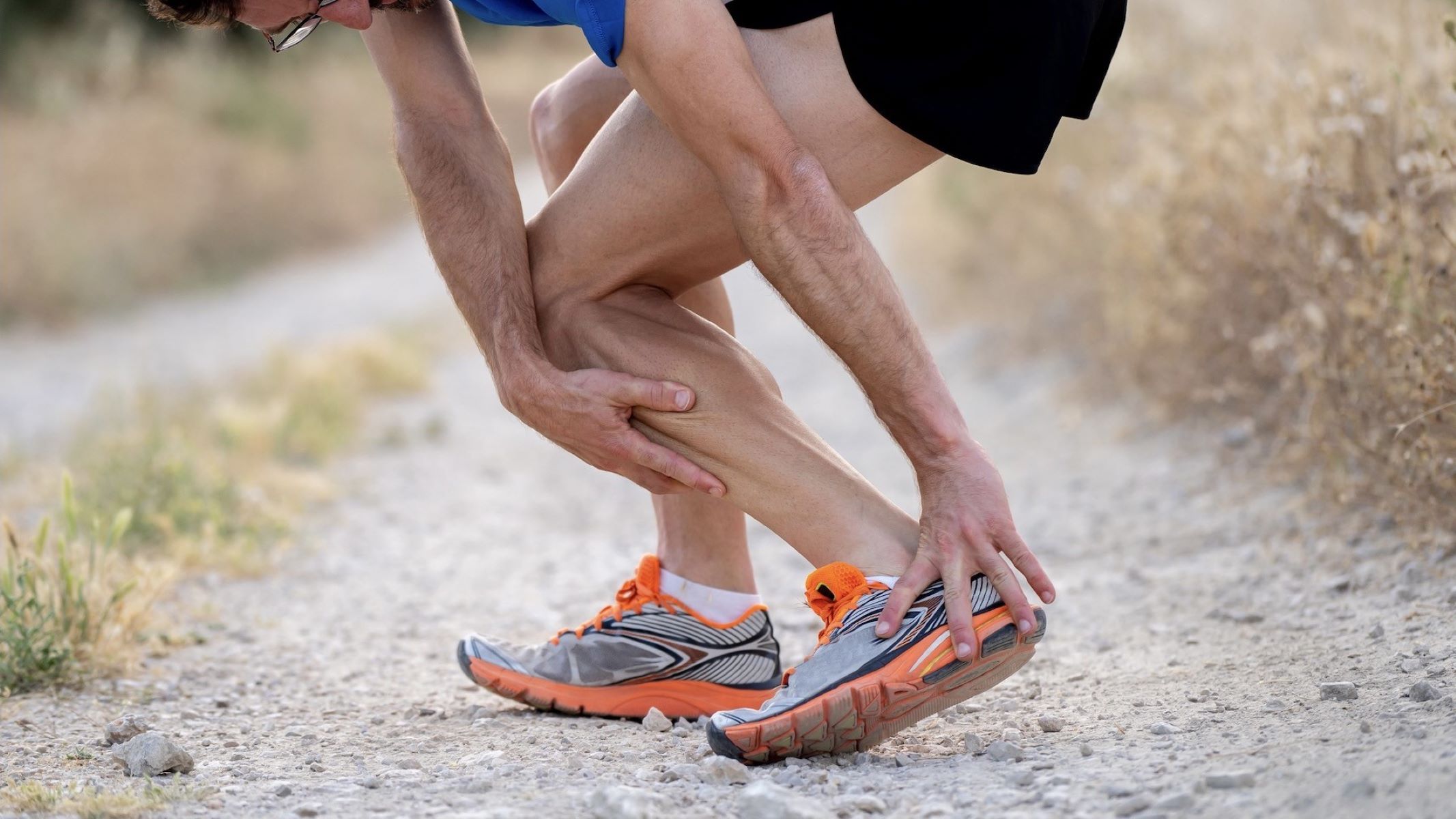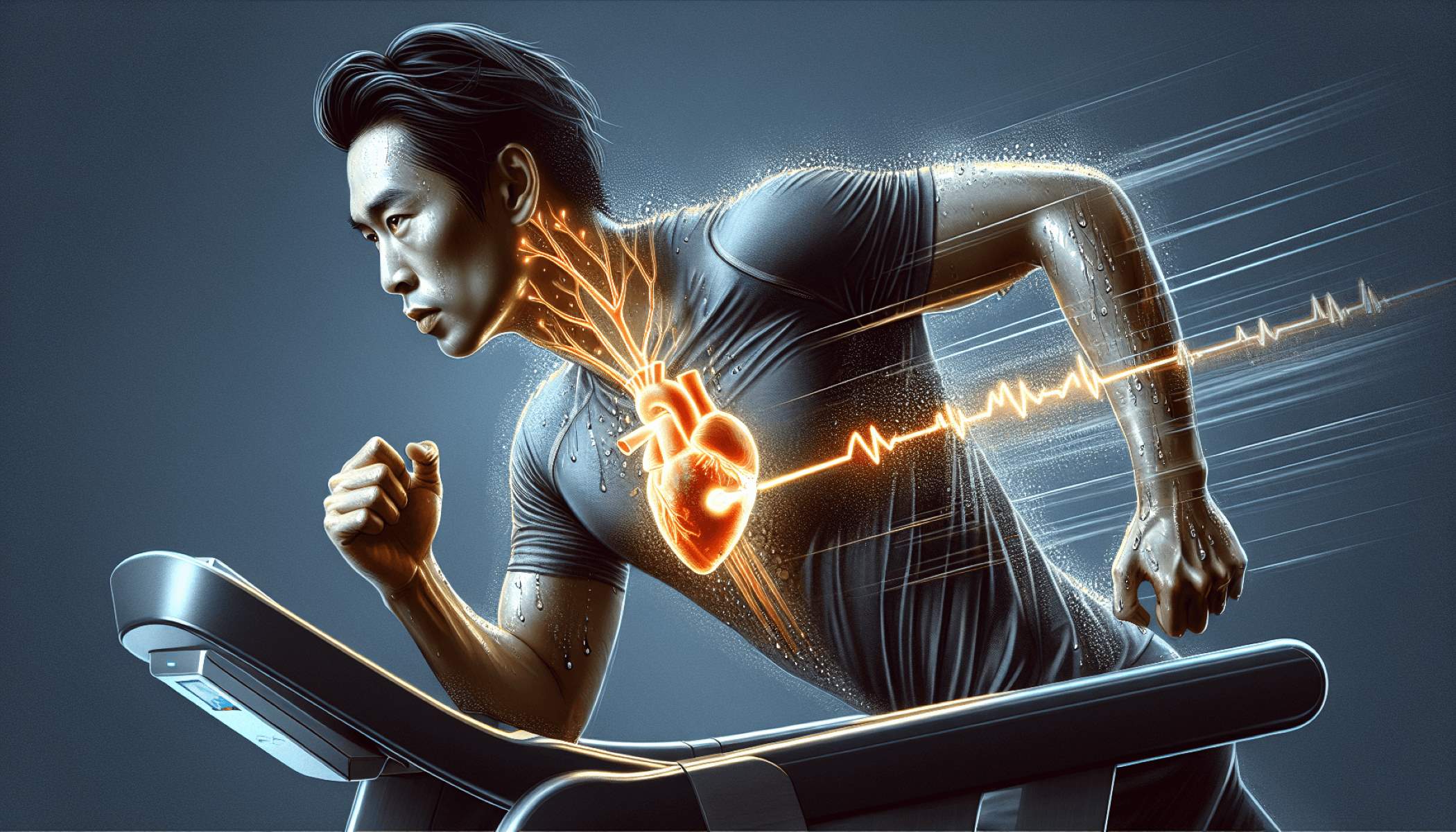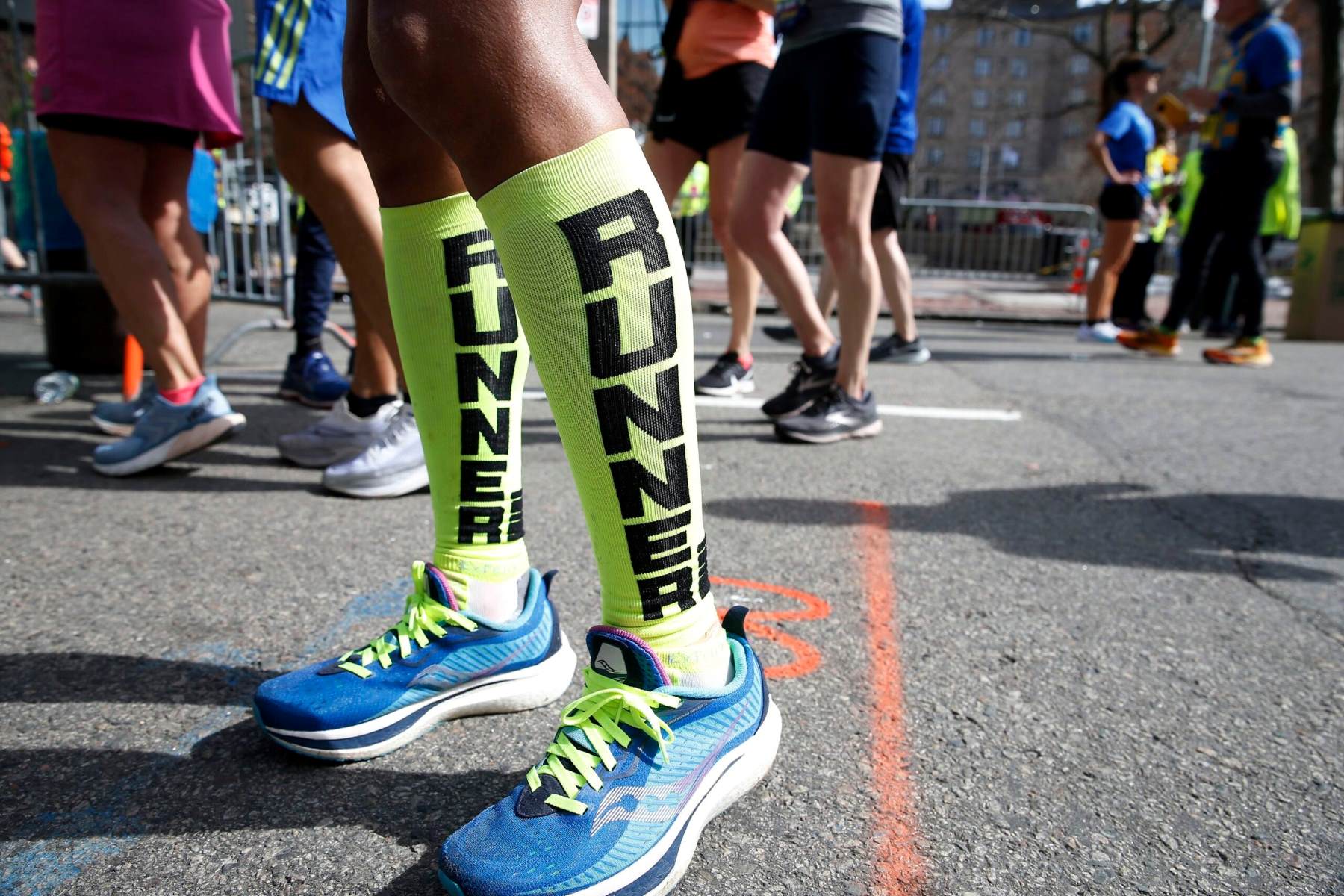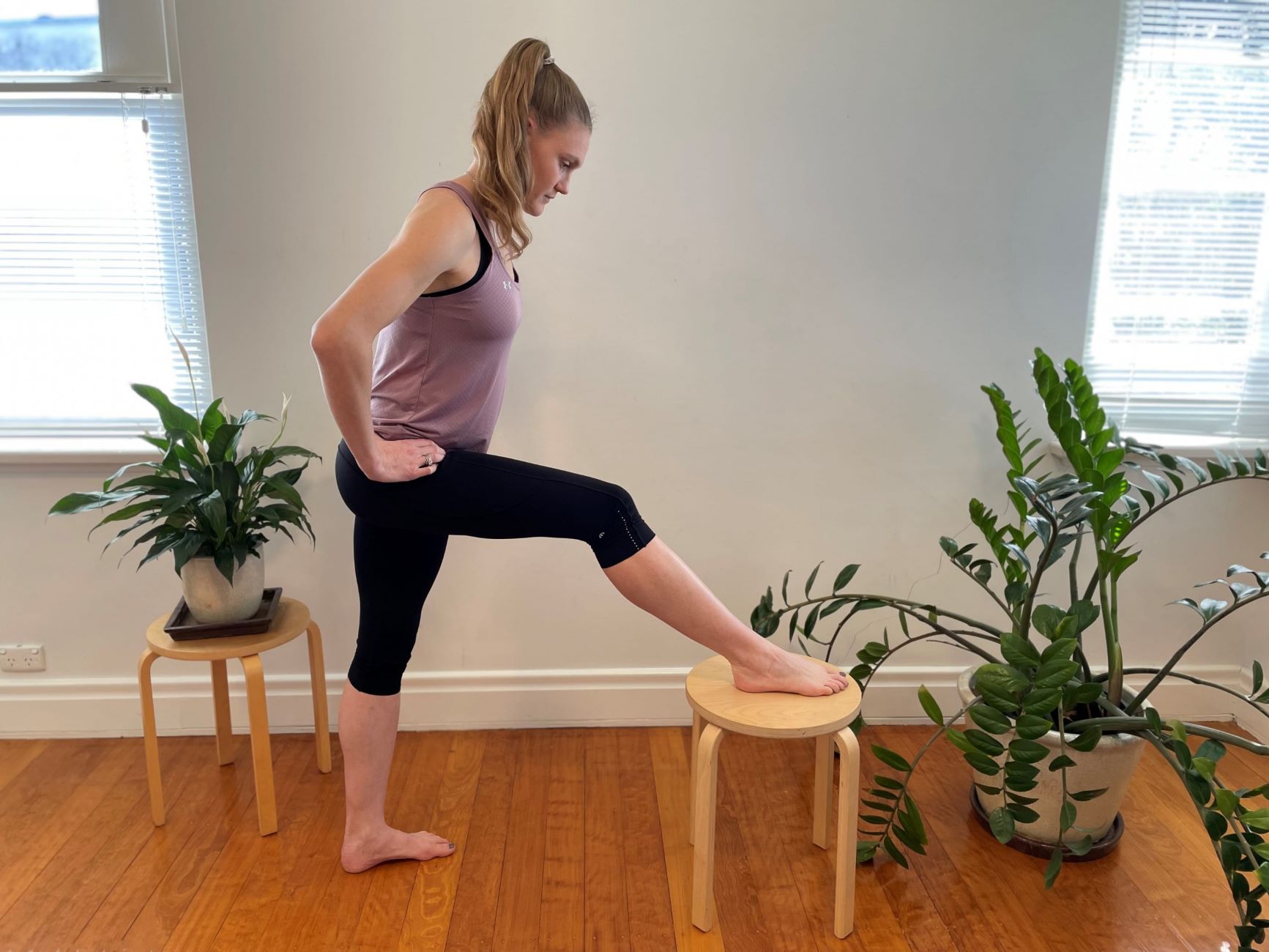Home>Health & Nutrition>Injury Prevention>All You Need To Know About Hamstring Strains


Injury Prevention
All You Need To Know About Hamstring Strains
Published: February 27, 2024
Learn how to prevent hamstring strains and protect yourself from injury with our comprehensive guide. Understand the causes, symptoms, and treatment options.
(Many of the links in this article redirect to a specific reviewed product. Your purchase of these products through affiliate links helps to generate commission for Therunningadvisor.com, at no extra cost. Learn more)
Table of Contents
Understanding Hamstring Strains
Hamstring strains are a common injury that can occur in athletes and non-athletes alike. The hamstrings are a group of three muscles located at the back of the thigh: the biceps femoris, semitendinosus, and semimembranosus. These muscles play a crucial role in activities such as running, jumping, and bending the knee. When these muscles are stretched beyond their limits or subjected to sudden and excessive force, they can become strained.
Hamstring strains are often categorized into three grades based on their severity. Grade 1 strains involve mild stretching or microscopic tears within the muscle fibers, leading to discomfort and minimal loss of function. Grade 2 strains involve partial tearing of the muscle fibers, resulting in moderate pain, swelling, and reduced strength. Grade 3 strains are the most severe, involving a complete tear or rupture of the muscle, leading to significant pain, swelling, bruising, and loss of function.
Understanding the mechanism of hamstring strains is essential for injury prevention and management. These injuries commonly occur during activities that involve explosive movements, such as sprinting, kicking, or sudden changes in direction. Additionally, inadequate warm-up, poor flexibility, muscle imbalances, and fatigue can increase the risk of hamstring strains.
It's important to note that hamstring strains can affect individuals of all fitness levels, not just professional athletes. Engaging in activities that the body is not accustomed to, such as sudden intense workouts or sports participation after a period of inactivity, can also predispose individuals to hamstring strains.
By understanding the nature of hamstring strains and the factors that contribute to their occurrence, individuals can take proactive measures to reduce their risk of injury and promote overall muscle health. Whether it's through targeted stretching exercises, proper warm-up routines, or gradual progression in physical activities, a comprehensive understanding of hamstring strains empowers individuals to make informed choices for injury prevention and overall well-being.
Read more: All You Need To Know About Hip Flexor Strain
Causes of Hamstring Strains
Hamstring strains can be attributed to a variety of factors, many of which are preventable with the right knowledge and precautions. Understanding the causes of these injuries is crucial for implementing effective preventive measures and promoting overall muscle health.
-
Muscle Imbalance: One of the primary causes of hamstring strains is muscle imbalance. When the quadriceps muscles at the front of the thigh are significantly stronger than the hamstrings, it can lead to an imbalance in the forces acting on the knee and hip joints. This imbalance places excessive strain on the hamstrings, making them more susceptible to injury during physical activities.
-
Inadequate Warm-Up: Failing to properly warm up before engaging in physical activities can significantly increase the risk of hamstring strains. A thorough warm-up routine helps prepare the muscles for the demands of exercise by increasing blood flow, improving flexibility, and enhancing muscle elasticity. Without adequate warm-up, the hamstrings may be ill-prepared for the sudden and forceful movements associated with activities such as sprinting or jumping, making them more prone to strain.
-
Poor Flexibility: Limited flexibility in the hamstrings can also contribute to the risk of strains. When the muscles lack the necessary flexibility to accommodate sudden or forceful movements, they are more likely to experience strain or tearing. Regular stretching exercises that target the hamstrings can help improve flexibility and reduce the likelihood of injury.
-
Fatigue: Physical fatigue, whether due to overexertion or inadequate rest, can compromise muscle function and increase the risk of injury. When the hamstrings are fatigued, their ability to absorb and dissipate forces during physical activities is diminished, making them more vulnerable to strains.
-
Sudden Movements: Activities that involve sudden and explosive movements, such as sprinting, kicking, or rapid changes in direction, can place significant stress on the hamstrings. The rapid and forceful contraction of the muscles during these movements can exceed their capacity, leading to strain or tearing of the muscle fibers.
-
Previous Injury: A history of hamstring strains or inadequate rehabilitation following a previous injury can predispose individuals to recurrent strains. Incomplete healing or residual weakness in the muscles can increase the likelihood of reinjury during subsequent physical activities.
By understanding these causes of hamstring strains, individuals can take proactive steps to mitigate their risk. Implementing targeted strength and flexibility exercises, incorporating proper warm-up and cool-down routines, and gradually increasing the intensity of physical activities can all contribute to reducing the likelihood of hamstring strains. Additionally, maintaining overall muscle balance and seeking appropriate rest and recovery can further support injury prevention and promote long-term muscle health.
Symptoms of Hamstring Strains
Identifying the symptoms of hamstring strains is crucial for prompt recognition and appropriate management of these injuries. Individuals who engage in physical activities, whether recreational or professional, should be mindful of the following signs that may indicate a hamstring strain:
-
Pain: One of the primary symptoms of a hamstring strain is pain in the back of the thigh. The intensity of the pain can vary depending on the severity of the strain. In mild cases, individuals may experience a dull ache or discomfort, while more severe strains can cause sharp, intense pain that interferes with movement and daily activities.
-
Tenderness: Upon palpation, the affected area may exhibit tenderness and sensitivity. This tenderness is often localized to the specific site of the strain and may be accompanied by swelling or bruising in more severe cases.
-
Reduced Range of Motion: Hamstring strains can lead to a noticeable reduction in the range of motion of the affected leg. Individuals may experience difficulty fully extending the leg or bending the knee, and performing activities that require these movements can exacerbate the discomfort.
-
Weakness: Muscle weakness in the hamstring region is a common symptom of strains. Individuals may find it challenging to bear weight on the affected leg or perform activities that involve pushing off or propelling the body forward, such as running or jumping.
-
Popping Sensation: In cases of more severe strains, individuals may report a popping or snapping sensation at the time of injury. This sensation is often accompanied by immediate and intense pain, indicating a significant tear or rupture of the muscle fibers.
-
Bruising and Swelling: Severe hamstring strains can lead to visible bruising and swelling in the back of the thigh. The presence of bruising indicates internal bleeding within the muscle tissue, while swelling is a result of the body's inflammatory response to the injury.
-
Difficulty Walking: Individuals with hamstring strains may experience difficulty walking, particularly when attempting to bear weight on the affected leg. This difficulty is often due to pain, weakness, and limited range of motion, which can significantly impact mobility.
It's important to note that the severity of symptoms can vary depending on the grade of the hamstring strain. Grade 1 strains may present with milder symptoms and minimal functional impairment, while grade 2 and 3 strains often manifest with more pronounced pain, swelling, and loss of function.
Recognizing these symptoms and seeking appropriate medical evaluation is essential for accurate diagnosis and tailored treatment. Early intervention can facilitate a smoother recovery process and minimize the risk of complications associated with untreated hamstring strains.
Diagnosing Hamstring Strains
Diagnosing hamstring strains involves a comprehensive assessment that encompasses a combination of clinical evaluation, medical history review, and diagnostic imaging, aimed at accurately characterizing the nature and severity of the injury. Healthcare professionals, such as sports medicine physicians, orthopedic surgeons, or physiotherapists, play a pivotal role in the diagnostic process, utilizing their expertise to guide the evaluation and management of hamstring strains.
The initial step in diagnosing a hamstring strain typically involves a detailed medical history review. Healthcare providers inquire about the circumstances surrounding the injury, including the specific activity or event that precipitated the onset of symptoms. Understanding the mechanism of injury, such as sudden acceleration, deceleration, or direct impact, provides valuable insight into the forces that may have contributed to the strain.
Clinical evaluation is a fundamental component of the diagnostic process, allowing healthcare providers to assess the range of motion, strength, and flexibility of the affected leg. Physical examination may involve palpation of the hamstring muscles to identify areas of tenderness, swelling, or localized pain. Additionally, specific tests, such as the straight leg raise test, may be performed to evaluate the integrity and function of the hamstring muscles.
Diagnostic imaging, such as ultrasound or magnetic resonance imaging (MRI), may be employed to visualize the extent of the injury and confirm the diagnosis. Ultrasound imaging can provide real-time visualization of the hamstring muscles, allowing for the assessment of muscle fiber disruption and the presence of any associated fluid or hematoma. MRI, on the other hand, offers detailed anatomical imaging, enabling healthcare providers to accurately grade the severity of the strain and identify potential complications, such as avulsion injuries or tendon involvement.
In some cases, electromyography (EMG) or nerve conduction studies may be utilized to assess nerve function and rule out associated nerve injuries, particularly in instances of more severe hamstring strains. These studies can help differentiate between muscle-related symptoms and potential nerve compression or dysfunction, contributing to a more comprehensive understanding of the injury.
The diagnostic process for hamstring strains is multifaceted, encompassing a combination of clinical assessment and imaging modalities to ensure an accurate and thorough evaluation. By leveraging a comprehensive approach to diagnosis, healthcare providers can tailor treatment strategies and rehabilitation plans to address the specific characteristics of the hamstring strain, ultimately promoting optimal recovery and a safe return to physical activities.
Treatment Options for Hamstring Strains
The treatment of hamstring strains is multifaceted, aiming to alleviate symptoms, promote healing, and restore optimal function of the affected muscles. The approach to treatment is often tailored based on the severity of the strain, with grade 1, 2, and 3 strains requiring distinct management strategies.
Read more: All You Need To Know About Strava Summit
Grade 1 Strains
For mild hamstring strains, conservative treatment measures are typically effective in facilitating recovery. The R.I.C.E. protocol, which stands for rest, ice, compression, and elevation, is commonly recommended in the initial stages of injury management. Resting the affected leg helps prevent further strain and allows the muscles to begin the healing process. Applying ice to the injured area reduces pain and inflammation, while compression with an elastic bandage and elevation of the leg further aid in minimizing swelling.
In addition to the R.I.C.E. protocol, gentle stretching and strengthening exercises may be initiated to promote flexibility and muscle resilience. These exercises are gradually introduced to prevent overexertion and facilitate the gradual restoration of muscle function. Nonsteroidal anti-inflammatory drugs (NSAIDs) may be recommended to alleviate pain and reduce inflammation, contributing to improved comfort during the healing process.
Grade 2 and 3 Strains
More severe hamstring strains, such as grade 2 and 3 injuries, often necessitate a more comprehensive treatment approach. In addition to the measures employed for grade 1 strains, grade 2 and 3 injuries may require a longer period of rest and activity modification to facilitate optimal healing. Immobilization of the affected leg with a brace or crutches may be necessary to reduce strain on the injured muscles and promote stability during the initial phases of recovery.
Physical therapy plays a crucial role in the rehabilitation of moderate to severe hamstring strains. Under the guidance of a qualified physiotherapist, individuals undergo targeted exercises aimed at restoring strength, flexibility, and functional mobility of the hamstring muscles. These exercises are progressively advanced as the muscles heal, promoting gradual return to normal activities and sports participation.
In some cases, regenerative treatments such as platelet-rich plasma (PRP) therapy or prolotherapy may be considered to accelerate the healing process and enhance tissue repair. These treatments involve the injection of concentrated growth factors or irritants into the injured area, stimulating the body's natural healing mechanisms and promoting tissue regeneration.
Surgical intervention is rarely indicated for hamstring strains, primarily reserved for cases of severe grade 3 strains with significant muscle retraction or avulsion injuries. Surgical repair aims to reattach the torn muscle fibers or address associated complications, with postoperative rehabilitation playing a pivotal role in restoring muscle function and strength.
Overall, the treatment of hamstring strains encompasses a comprehensive approach that addresses the specific needs of the individual based on the severity of the injury. By implementing targeted interventions and rehabilitation strategies, healthcare providers strive to optimize recovery outcomes and facilitate a safe return to physical activities.
Rehabilitation and Recovery from Hamstring Strains
Rehabilitation and recovery from hamstring strains play a pivotal role in restoring optimal muscle function, promoting tissue healing, and minimizing the risk of recurrent injuries. The rehabilitation process is tailored to the specific grade and severity of the strain, encompassing a comprehensive approach that integrates therapeutic exercises, progressive mobility training, and targeted interventions to facilitate a safe return to physical activities.
Phase-Based Rehabilitation
The rehabilitation of hamstring strains typically follows a phased approach, with each phase focusing on distinct objectives to support the gradual progression of muscle healing and functional recovery. The initial phase of rehabilitation emphasizes pain management, reduction of inflammation, and protection of the injured muscles. This phase often involves the continuation of the R.I.C.E. protocol, gentle stretching exercises, and the implementation of modalities such as ultrasound or electrical stimulation to promote tissue healing.
As the muscles begin to heal, the rehabilitation program advances to the phase of restoring flexibility, strength, and functional mobility. Under the guidance of a skilled physiotherapist, individuals engage in targeted stretching exercises to improve the flexibility of the hamstring muscles, reducing the risk of scar tissue formation and promoting optimal muscle length. Concurrently, progressive strengthening exercises are introduced to rebuild muscle resilience and enhance overall muscle function.
Read more: All You Need To Know About IT Band Syndrome
Functional Rehabilitation and Return to Activity
The subsequent phase of rehabilitation focuses on functional training and the gradual reintroduction of activities that mimic the demands of daily life and sports participation. Functional exercises, such as lunges, squats, and dynamic movements, are incorporated to simulate real-world muscle function and promote the integration of the healed muscles into functional activities. This phase also emphasizes the refinement of movement patterns, balance, and coordination to support a smooth transition back to regular activities.
For individuals involved in sports or athletic pursuits, sport-specific rehabilitation is an integral component of the recovery process. Sports medicine professionals collaborate with athletes to design tailored rehabilitation programs that address the specific movement patterns and demands of their respective sports. This may involve agility drills, sport-specific strength training, and gradual progression to sport-specific activities to ensure a safe and effective return to athletic performance.
Long-Term Management and Injury Prevention
Beyond the immediate recovery phase, long-term management and injury prevention strategies are essential to mitigate the risk of recurrent hamstring strains. This involves the implementation of ongoing strength and flexibility maintenance programs to sustain the resilience and integrity of the hamstring muscles. Additionally, addressing any underlying biomechanical imbalances or movement deficiencies through gait analysis, corrective exercises, and functional movement assessments can further reduce the risk of future injuries.
The rehabilitation and recovery process for hamstring strains is a dynamic and individualized journey, guided by the expertise of healthcare professionals and the commitment of individuals to actively participate in their recovery. By adhering to the principles of phased rehabilitation, functional training, and long-term injury prevention, individuals can optimize their recovery outcomes and cultivate resilient, healthy muscles that support their overall well-being and physical performance.
Preventing Hamstring Strains
Preventing hamstring strains is a proactive endeavor that involves a multifaceted approach aimed at reducing the risk of injury and promoting overall muscle health. By implementing targeted strategies and lifestyle modifications, individuals can significantly mitigate the likelihood of experiencing hamstring strains, fostering resilience and optimal function of the hamstring muscles.
Comprehensive Warm-Up and Cool-Down Routines
Incorporating thorough warm-up and cool-down routines into physical activities is paramount for preparing the muscles for the demands of exercise and facilitating optimal recovery post-activity. A dynamic warm-up, comprising dynamic stretching, light aerobic exercises, and sport-specific movements, primes the muscles for activity by increasing blood flow, enhancing flexibility, and improving muscle elasticity. Similarly, a structured cool-down routine, involving static stretching and gradual reduction of intensity, supports muscle relaxation and aids in the dissipation of metabolic byproducts accumulated during exercise, promoting efficient recovery and reducing the risk of muscle tightness and injury.
Targeted Strength and Flexibility Training
Engaging in targeted strength and flexibility training plays a pivotal role in preventing hamstring strains. Incorporating exercises that specifically target the hamstrings, such as deadlifts, lunges, and hamstring curls, helps build muscle resilience and enhances the capacity of the muscles to withstand forceful movements. Additionally, regular stretching exercises that focus on improving hamstring flexibility contribute to reducing the risk of strain during activities that involve sudden or forceful movements, promoting optimal muscle length and function.
Muscle Balance and Symmetry
Maintaining muscle balance and symmetry between the quadriceps and hamstrings is essential for minimizing the risk of strains. Implementing comprehensive strength training programs that address both muscle groups helps prevent imbalances that can predispose individuals to injury. By promoting overall muscle symmetry and balance, individuals can optimize the biomechanical integrity of the lower extremities, reducing the strain on the hamstrings during physical activities and promoting harmonious muscle function.
Gradual Progression and Periodization
Gradual progression and periodization of physical activities are fundamental for injury prevention. Individuals should gradually increase the intensity, duration, and frequency of their workouts, allowing the muscles to adapt and strengthen progressively. Periodization, which involves structured variations in training intensity and volume, supports optimal recovery and adaptation, reducing the risk of overuse injuries, including hamstring strains. By adhering to a systematic and progressive approach to training, individuals can cultivate resilient muscles and minimize the likelihood of strain-related injuries.
Biomechanical Analysis and Movement Assessment
Undergoing biomechanical analysis and movement assessments can provide valuable insights into individual movement patterns and potential risk factors for hamstring strains. Gait analysis, functional movement assessments, and posture evaluations can identify movement deficiencies, compensatory patterns, and biomechanical imbalances that may predispose individuals to injury. Addressing these factors through targeted corrective exercises, movement re-education, and footwear modifications can significantly reduce the risk of strain-related injuries, promoting optimal movement mechanics and muscle function.
Lifestyle Modifications and Recovery Strategies
Incorporating lifestyle modifications and recovery strategies into daily routines can further support injury prevention and overall muscle health. Adequate rest, hydration, and nutrition are essential for muscle recovery and resilience, promoting optimal tissue repair and adaptation. Additionally, prioritizing adequate sleep, stress management, and active recovery modalities, such as foam rolling and massage, can enhance overall muscle recovery and reduce the risk of overuse injuries, including hamstring strains.
By integrating these preventive measures into their lifestyle and physical activities, individuals can proactively reduce the risk of hamstring strains, fostering resilient and healthy muscles that support their overall well-being and physical performance. Through a comprehensive and proactive approach to injury prevention, individuals can optimize their muscle health and minimize the likelihood of experiencing debilitating hamstring strains.












